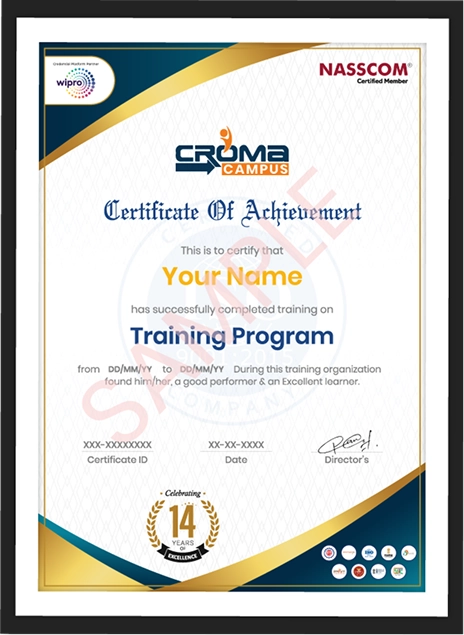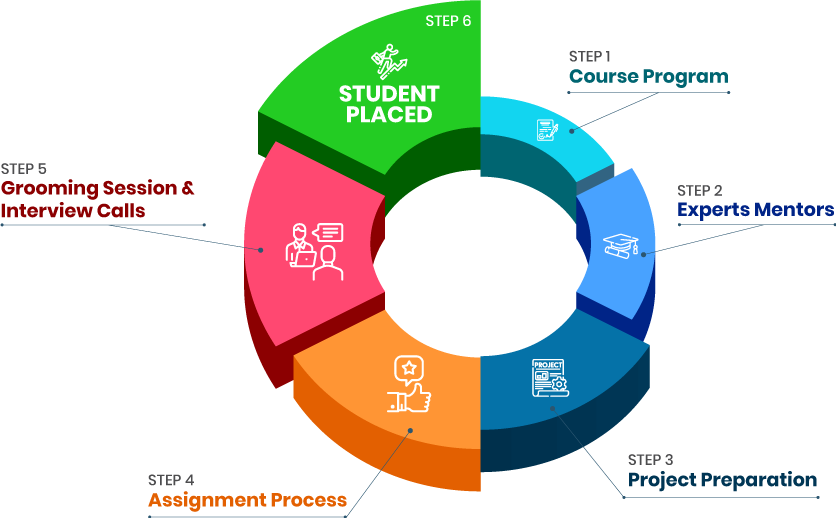Course Design By
Nasscom & Wipro
Learning out the software testing.
Adapting out the bug report & principles of testing.
Completing out the knowledge of the Qc & QA process.
Well-adapted with the knowledge of software testing.
Processing out different models related to the software companies.
Manual testers play a big role in the domain of software development. They need to work with different teams thus maintaining coordination becomes essential.
It is important to track, analyze as well as execute the test cases for ensuring the success of the software. Development of test cases takes place which is based on the needs & requirements of the software.
Many of the test cases are executed manually with the help of Black box testing & Grey box testing respectively.
If there are bugs in the software then the team of testers requires to inform the development team for giving the best end-user product.
The development team solves the issue and makes out the software bug & defect-free.
Many organizations believe that manual testing is cheaper because they are not required for spending the funds on automation & CI (Continous Integration) tools.
Manual testing requires more time to complete. Testing engineers need to prepare data and analyze it with considering out to increase the organizational efficiency.
It helps out in finding visual bugs and testing out the user-friendliness of multiple applications. Moreover, it is the part that involves human interaction.
Complex scenarios get avoided with the help of manual testing as it leaves testing gaps in the application. IN this scenario automation acts out as a power booster. Every day, we see hundreds of new apps & products in the current market scenario. Moreover, a lot of testing is required to check out the quality of end-product software. Manual testing has a critical role in the QA process.
It also helps out in designing the use cases & documents with 100% coverage of results.
Experience with manual as well as automation testing skills.
Strong understanding of the testing strategies, processes as well as development.
Highly proficient in testing out the application developed out the AWS, Java, AngularJs, NodeJs, etc.
Well-adapted with agile software development practices.
Maintaining the manual test scripts & regression analysis.
Ability to communicate out QA metrics/ reports with levels of management.
Defining out the scope of automation, testing plans, and other efforts.
we train you to get hired.

By registering here, I agree to Croma Campus Terms & Conditions and Privacy Policy
+ More Lessons
Course Design By

Nasscom & Wipro
Course Offered By

Croma Campus

Stories
success
inspiration


career upgrad


career upgrad


career upgrad


career upgrad
05-Jul-2025*
07-Jul-2025*
02-Jul-2025*
05-Jul-2025*
07-Jul-2025*
02-Jul-2025*

You will get certificate after
completion of program

You will get certificate after
completion of program

You will get certificate after
completion of program
in Collaboration with






Empowering Learning Through Real Experiences and Innovation

we train you to get hired.

Phone (For Voice Call):
+91-971 152 6942WhatsApp (For Call & Chat):
+91-971 152 6942Get a peek through the entire curriculum designed that ensures Placement Guidance
Course Design By


Course Offered By

Ready to streamline Your Process? Submit Your batch request today!
QA (Quality assurance) generally refers to the process of inculcating out the highest possible qualities in the product.
The role of manual testers is to make out software meets specific requirements.
Yes, some skills are important for learning manual testing.

FOR QUERIES, FEEDBACK OR ASSISTANCE
Best of support with us
For Voice Call
+91-971 152 6942For Whatsapp Call & Chat
+91-9711526942